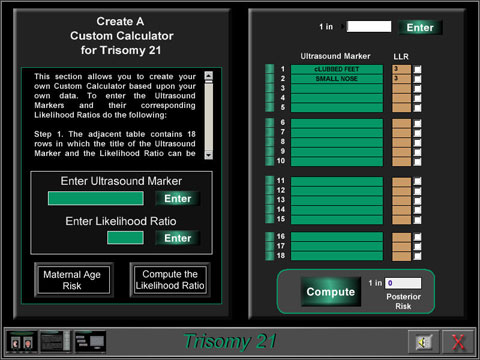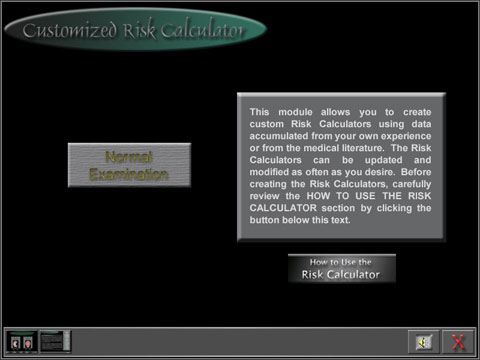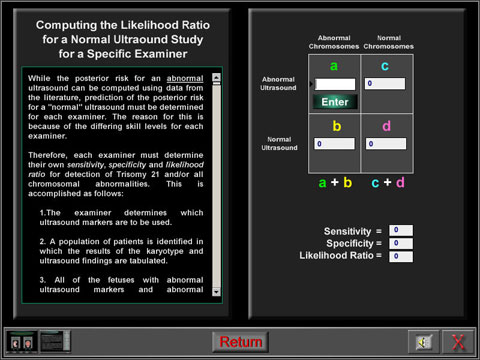Volume 4
Calculating Risk
Custom Risk Calculator
|
|
If you have your own data, a custom calculator can be created. |
 |
The user simpley follows the instructions and enters the name of the marker and the corresponding likelihood ratio. These are listed and stored on the computer. |
 |
This calculator is used to compute the likelihood ratio of a negative or normal ultrasound examination. |
|
|
The examiner enters the initial risk for trisomy 21, for example, and the likelihood ratio for a normal ultrasound. The new or posterior risk is then computed. |
 |
If you need to compute the likelihood for a negative or normal ultrasound, you can do so by filling in the data in this contigency table. |


